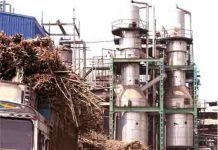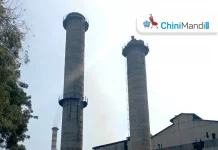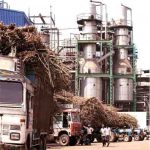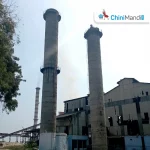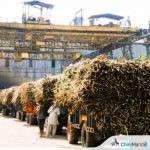The importance of distributing fertilizers from government undertakings like RCF to all states based on the land under agriculture lies in ensuring equitable access to essential nutrients for crop production. This approach helps to support agricultural productivity nationwide, address regional disparities, promote balanced agricultural development, and ensure food security for the entire population. By distributing fertilizers based on the land under cultivation in each state, the government can tailor its support to meet the specific needs of different regions, crops, and farming practices, thereby optimizing agricultural output and contributing to overall economic growth.
IMPORTANT PROVISIONS OF THE FERTILISER CONTROL ORDER, 1985 : The Fertilizer Control Order (FCO) of 1985, administered by the Dept. Of Agriculture, has been issued under the Essential Commodities Act,1955. This order includes several provisions aimed at ensuring the equal distribution of fertilizers:
1) Regulation of Prices: The FCO regulates the prices at which fertilizers can be sold to ensure affordability and accessibility for farmers.
2) Quality Control: It establishes standards for the quality of fertilizers to safeguard farmers against inferior products.
3) Licensing of Manufacturers and Dealers: The order requires manufacturers and dealers to obtain licenses, ensuring accountability and adherence to regulations.
4) Distribution Channels: It outlines the distribution channels for fertilizers, ensuring efficient and equitable distribution across regions.
5) Monitoring and Enforcement: The FCO includes provisions for monitoring compliance and enforcing regulations to prevent hoarding, black marketing, and other malpractices.
These provisions collectively aim to promote the balanced distribution of fertilizers across India, benefiting farmers and agricultural productivity.
HOW TO COLLECT STATE WISE DATA ABOUT LAND UNDER CULTIVATION: Collecting state-wise data about land under agriculture typically involves a combination of methods:
1)Government surveys: Governments often conduct agricultural surveys to gather data on land use, including the extent of agricultural land in each state. These surveys may be periodic or conducted at regular intervals to monitor changes over time.
2) Satellite imagery and remote sensing: Satellite imagery and remote sensing technologies can provide valuable insights into land use patterns, including the extent of agricultural land. Remote sensing data can be analyzed to estimate the area under different types of crops and agricultural practices.
3) Census data: National census programs often collect data on land use and agricultural activities. Census data can provide a comprehensive overview of agricultural land across states and can be used to identify trends and patterns.
4) Agricultural departments and agencies: State agricultural departments and agencies may collect data on land under agriculture as part of their monitoring and planning activities. These organizations often collaborate with national agencies to compile comprehensive datasets.
5) Survey and mapping techniques: Ground surveys and mapping techniques can be used to collect detailed information about land use at the local level. These techniques may involve field visits, interviews with farmers, and the use of GPS technology to map agricultural land.
By combining these methods, governments can collect comprehensive and reliable data on land under agriculture at the state level. This data is essential for planning agricultural policies, allocating resources, and monitoring changes in land use over time.
EFFECTIVE DISTRIBUTION SYSTEM UNDER DISTRICT COLLECTORS: Implementing an effective distribution system for fertilizers at the district level under the supervision of District Collectors can involve the following components:
1) Centralized coordination: Establish a centralized coordination mechanism under the District Collector’s office to oversee fertilizer distribution activities within the district. This ensures efficient management and accountability.
2) Database management: Develop a comprehensive database of farmers within the district, including their land holdings, cropping patterns, and fertilizer requirements. This database can be used to tailor distribution efforts and ensure equitable access to fertilizers.
3) Transparent allocation: Allocate fertilizers to various distribution points within the district based on factors such as agricultural area, crop requirements, and historical demand. Ensure transparency in the allocation process to prevent favoritism or hoarding.
4) Distribution centers: Set up distribution centers strategically located across the district to facilitate easy access for farmers. These centers should be equipped with adequate infrastructure and trained personnel to handle distribution efficiently.
5) Timely distribution: Implement mechanisms to ensure timely distribution of fertilizers, especially during peak demand periods such as planting seasons. This may involve pre-planning, forecasting, and coordination with suppliers to maintain adequate stock levels.
6) Monitoring and supervision: Implement robust monitoring and supervision mechanisms to track fertilizer distribution activities at the district level. This can include regular inspections, audits, and feedback mechanisms to identify and address any issues promptly.
7) Public awareness and outreach: Conduct awareness campaigns and outreach programs to educate farmers about the availability and proper use of fertilizers. This can help promote responsible fertilizer usage and maximize its impact on agricultural productivity.
8) Technology integration: Utilize technology such as digital platforms, mobile applications, and GPS tracking systems to streamline distribution processes, enhance transparency, and improve data management.
By implementing a well-designed distribution system at the district level under the leadership of District Collectors, governments can ensure efficient and equitable access to fertilizers for farmers, ultimately contributing to enhanced agricultural productivity and rural development.
NEED OF FULL FLAGGED DISTRIBUTION SYSTEM FOR EQUAL DEVELOPMENT OF AGRICULTURE ALL OVER THE COUNTRY: There is an Uttar need of full flagged system of equal distribution of fertilizers for equitable development of agriculture across the country. This is crucial to ensure equitable developmental activities for several reasons mentioned below….
1) Fairness and Equity: Equal distribution ensures that all farmers, regardless of their location or socio-economic status, have access to the necessary resources for agricultural productivity. This promotes fairness and helps reduce disparities between regions.
2) Maximizing Agricultural Output: Balanced distribution of fertilizers can help maximize agricultural output nationwide. When farmers have access to the right amount of fertilizers, they can optimize crop yields, contributing to overall food security and economic growth.
3) Mitigating Regional Disparities: In many countries, there are significant disparities in agricultural development between regions. Equal distribution of fertilizers helps mitigate these disparities by providing support to less-developed regions and leveling the playing field for all farmers.
4) Environmental Sustainability: By promoting balanced fertilizer use across different regions, a full-fledged distribution system can help prevent overuse or misuse of fertilizers, which can lead to environmental degradation, such as soil erosion, water pollution, and biodiversity loss.
5) Stability and Resilience: Ensuring that all regions have access to fertilizers helps build resilience in the agricultural sector. In times of natural disasters or market fluctuations, a more evenly distributed agricultural system is better equipped to withstand shocks and maintain stability in food production.
Overall, implementing a comprehensive system for equal distribution of fertilizers is essential for promoting sustainable agricultural development, reducing inequalities, and ensuring food security for all citizens.
In conclusion, establishing a robust system for the equal distribution of fertilizers is imperative for fostering fairness, maximizing agricultural output, mitigating regional disparities, promoting environmental sustainability, and enhancing the overall stability and resilience of the agricultural sector. By ensuring that all farmers have access to the necessary resources for crop production, such a system not only contributes to equitable development but also lays the foundation for long-term food security and sustainable growth across the nation.







